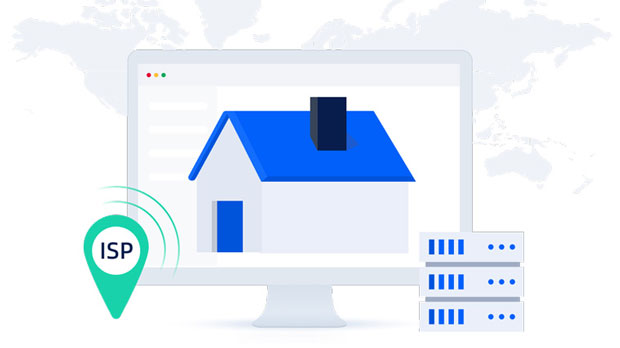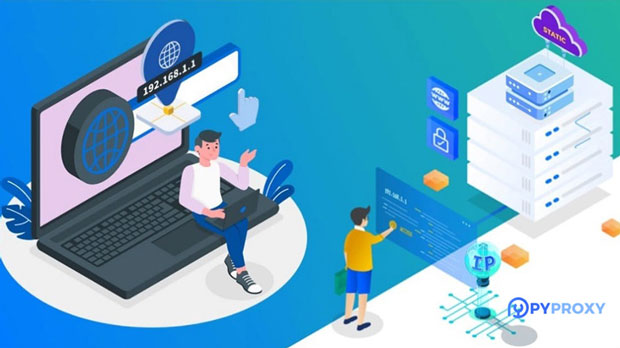When selecting a fast socks5 proxy, it is crucial to pay attention to several key performance indicators that directly affect your browsing speed, privacy, and overall experience. socks5 proxies are widely used for activities like secure web browsing, gaming, and accessing geo-restricted content. However, not all SOCKS5 proxies are created equal. To ensure that you get the most reliable and efficient performance, you must consider factors such as latency, bandwidth, server locations, reliability, and security features. Understanding these elements can help you make an informed decision and select a proxy that suits your specific needs. In this article, we will dive deep into these critical factors, providing you with a comprehensive understanding of how to choose the right fast SOCKS5 proxy. 1. Latency: The Importance of Low PingWhen it comes to the speed of a proxy, latency (or ping) is perhaps the most significant factor. Latency refers to the time it takes for data to travel from your device to the proxy server and back. A low-latency proxy will result in a smoother browsing experience, especially for real-time activities like online gaming, video streaming, or voice calls.To ensure low latency, consider proxies with servers geographically closer to your location. The further the proxy server is from you, the higher the latency tends to be, which can significantly degrade your experience. For example, if you are based in Europe and you use a proxy server located in Asia, you will experience higher ping times compared to a proxy server located in the same region.Latency can be tested through speed tests or by using diagnostic tools that measure round-trip times between your device and the proxy server. Make sure to check the average ping times before committing to a particular proxy.2. Bandwidth and Speed: Impact on PerformanceAnother key factor to consider when choosing a fast SOCKS5 proxy is bandwidth. Bandwidth refers to the maximum amount of data that can be transferred between your device and the proxy server within a given time frame, typically measured in megabits per second (Mbps). High bandwidth is crucial for activities that require large data transfers, such as downloading large files, streaming HD videos, or engaging in high-speed online gaming. A proxy with insufficient bandwidth can result in slow speeds, buffering, and lag.Additionally, speed is also directly affected by bandwidth. The greater the available bandwidth, the faster the data transfer, and the better the overall performance. When testing for speed, ensure you choose a proxy service that offers adequate bandwidth for your needs. This ensures that the proxy can handle your usage demands without throttling or excessive latency.3. Server Locations: Geographic ConsiderationsThe location of the socks5 proxy servers plays a significant role in determining the speed and reliability of your connection. Different activities, such as accessing content restricted to certain countries or maintaining low latency, require careful consideration of server locations.If your primary goal is to access content that is geographically restricted (such as viewing content from a specific country), make sure the proxy has servers in that region. For example, if you're trying to access U.S.-based streaming services, choosing a proxy server located in the U.S. will improve your chances of bypassing geographical restrictions.In terms of speed, the proximity of the server to your physical location also matters. The closer the server is, the faster the connection will generally be. However, make sure the proxy provider offers a broad range of server locations to allow flexibility in usage, especially if you need multiple international connections.4. Reliability and Uptime: Ensuring Consistent ServiceA reliable SOCKS5 proxy service is essential for a consistent experience. Uptime refers to the amount of time the proxy server remains online without interruptions or downtime. Frequent downtimes can disrupt your activities and cause significant inconvenience, especially during important tasks like video calls or online gaming.Before selecting a SOCKS5 proxy, research its reputation regarding uptime. Look for providers that guarantee high availability, ideally over 99% uptime. It's also beneficial to test the reliability of the proxy before making long-term commitments, ensuring that the service meets your needs without frequent interruptions.Furthermore, ensure that the provider offers good customer support in case any issues arise. A reliable support system can quickly resolve technical problems or downtimes, improving the overall experience.5. Security and Privacy: Protecting Your DataWhen using any type of proxy service, security and privacy are paramount. SOCKS5 proxies offer a certain level of anonymity by masking your IP address, but additional security features are often needed to ensure your data remains protected.First, check whether the proxy service supports encryption. A SOCKS5 proxy does not inherently encrypt your traffic, but many providers offer an additional layer of encryption. Encryption will protect your data from potential threats, such as hackers or surveillance agencies.Furthermore, you should verify the no-logs policy of the provider. A trustworthy proxy service should not log your activity or personal information, ensuring that your privacy is respected. This is especially important if you're using the proxy for sensitive tasks, such as online banking or browsing in restricted regions.Lastly, consider whether the proxy offers authentication methods like username and password or even IP-based access control. These methods can further secure your connection and prevent unauthorized users from accessing the proxy.6. Pricing and Value for MoneyPricing is another important aspect when selecting a fast SOCKS5 proxy. While it may be tempting to choose a free proxy service, be cautious. Free proxies often come with limitations, such as lower speeds, fewer server locations, and potential security risks. On the other hand, paid proxy services usually offer better performance, higher security, and more server options. When comparing prices, ensure that the service you choose offers good value for money by providing the necessary features that match your requirements. Consider factors such as speed, reliability, support, and security features in relation to the pricing.It's also a good idea to check for any trial periods or money-back guarantees, allowing you to test the service before committing long-term.7. Customer Support: The Importance of AssistanceEffective customer support can make a significant difference in your experience with a SOCKS5 proxy. Customer service is essential for resolving issues quickly, especially if you're dealing with technical problems or if your proxy connection is interrupted.Look for providers that offer 24/7 support through various channels, such as live chat, email, or phone. The ability to receive prompt assistance can save you a great deal of time and frustration. Support teams should be knowledgeable and responsive, capable of addressing any questions or concerns you may have about the proxy service. Whether you're a beginner or an experienced user, good customer support can significantly enhance the overall experience.Conclusion: Making an Informed DecisionChoosing a fast SOCKS5 proxy involves understanding several critical indicators that affect both performance and security. By focusing on key elements such as latency, bandwidth, server locations, reliability, security features, pricing, and customer support, you can make an informed decision that meets your specific needs. Testing the proxy before committing long-term, as well as evaluating customer feedback, can also ensure a reliable and efficient experience. Always prioritize the factors that are most important to you—whether that’s speed for gaming, privacy for secure browsing, or global accessibility for content streaming—to make the best choice.
Jan 03, 2025






















































